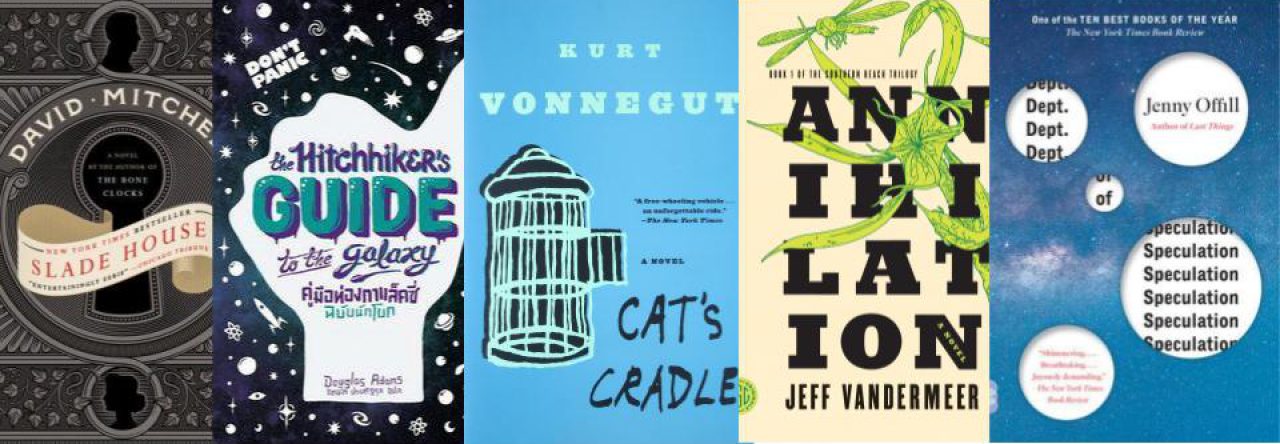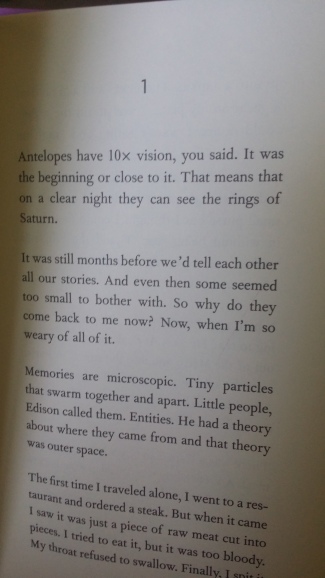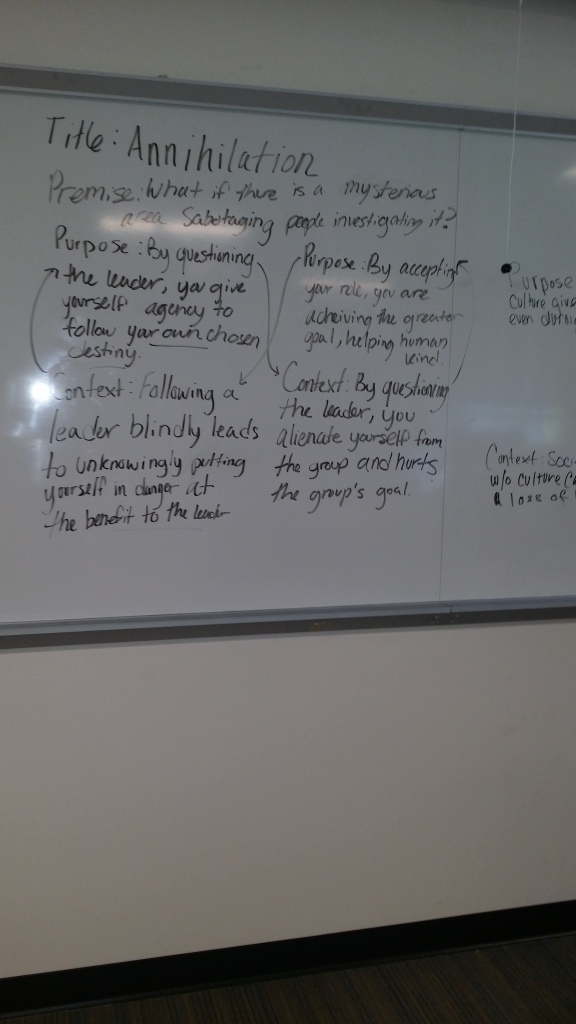When it comes to The Department of Speculation, I’m not sure that there could possibly be a better word to describe the overall analysis of this work than “speculation”. The author, in this case, has managed to craft such a compelling piece of literature that it not only transcribes multiple genres, but also creates some confusion as to whom this book is written for, and indeed, to whom the protagonist, the wife, is speaking to.
The very fact that for the latter half of the book, the narrator describes herself as nothing more than “the wife” as if she were an outsider looking in on her own life, takes the almost journalistic first person POV early on in the book and flips it entirely on its head. Not only that, but it also complicates the matter of what exactly the narrator’s purpose is in telling this story, transcribing it for others to find. Who is the intended audience, if there is one at all? Perhaps this entire text is nothing more than a rambling stream of consciousness, an outlet for a poor, downtrodden wife as she falls further and further into the grips of despair? There are many questions raised by the overall narrative of The Department of Speculation, not the least of which is whether or not there is an explicit intention for this work to be read by others (outside of, of course, the fact that the real-life author of this book wishes to make sales off their work), and I will do my best to address the possibilities of whom the intended addressee is throughout this fourth blog post.
As mentioned, throughout the first half of the book, the novel is written in first person, through the POV of a woman who goes unnamed. We learn early on that this woman is an author with great aspirations for a bright future that include taking advantage of all that life has to offer, being both independent and possessing a fairly positive outlook on life. The stream-of-consciousness style in which this book is written still lends a somewhat chaotic vibe that a simple journal entry would lack. In fact, it is almost as if the reader is being plunged headfirst directly into the mind of the narrator, the woman, and experiencing each and every sporadic, spastic thought that crosses her mind.
This is perhaps the most intriguing element to this novel, the fact that the addressee would seem to be someone that is allowed to peer directly into her mind as if a window were literally installed in the back of her skull. This is also what makes the book so entertaining and thought-provoking to read, as it prompts the reader to empathize with the woman in the sense that we, as human beings ourselves, can understand and accept that this is in fact how most of us think on a daily basis, from moment to moment; however, seeing such a detailed and thorough outline transcribed onto pages through the written word is something thnat most of us have rarely, if ever, experienced.
On the other hand, if one is to view this as a more literal journal entry, just one that happens to be written with a stream-of-consciousness fashion, then there are several possibilities as to whom the possible target audience is. It could be that the author wrote this in the style of a journal like most people keep, one that is to be kept private for therapeutic reasons. Perhaps the journal was meant to be passed on one day to the woman’s husband as a way of detailing how things went so horribly wrong, and using that for alternative therapeutic reasons in something like marriage counseling as a last ditch effort to save their failing marriage. Maybe the journal was meant to be passed on to the wife’s daughter when she grew older, serving as a cautionary tale of sorts, warning against letting go of her dreams and settling down too early and easily for her own good, as the book clearly demonstrates the wife’s slow descent into madness.
The final option would rest in the fact that, as we are made aware, the wife is both a teacher and writer by profession. She could, in fact, mirror the author herself, with the target audience consisting of those who would be inclined to pick up and read such a narrative from the local bookstore. The alternative possibility here is that she could be writing this all down for her students, for much the same reasons mentioned as that for her daughter, serving as a more broadened cautionary, yet entertaining tale for the younger generation to consume, take heed, and hopefully find some sort of entertainment from
At the very least, the author’s inclusions of jokes and explicit ways to make her transcribed thoughts more entertaining point towards the fact that The Department of Speculation goes far beyond a simple journal entry, meant to be kept secret for the entire life of the wife. Such an example can be found on page 124,
“Why couldn’t the Buddhist vacuum in corners? Because she had no attachments.”
The inclusion of simple jokes such as these speak volumes as to the exact type of addressee that the author, or the wife herself, would be writing all of this for. The humor is one way of providing entertainment, but the high-brow twist provided by the fact that one must first have knowledge of Buddhist principles to understand the joke speak towards a more scholarly reader, one that is fairly worldly and enjoys thinking critically. Basically, the intended addressee may indeed be the philosopher, much like the one she speaks of throughout the novel.
Rather, I believe that the scenario of the wife, a writer herself, directly mimicking the author, or the possibility of her writing this for future generations as a sort of cautionary tale are the more likely scenarios. As such, the intended addressee would be either the widespread audience that would be drawn towards a unique, compelling twist on the standard tale of a housewife that lost her way in the local bookstore, or the wife’s students, including her own daughter.
Lastly, I do think that the inclusion of so many high-brow jokes, philosophical diatribes, and internal monologues of quite the philosophical nature mean that this book was meant for those who, above all else, wish to shift their perspective inwards. To better understand the inner workings of their own mind, and maybe even how they got to the situations they are currently in right now, just as the wife did. After all, the wife was not aways the wife. At one point in her life she was a naive child, one that could have very well used a book such as this to guide her along the way, because, “No one young knows the name of anything.” (177)
By Jordan

















